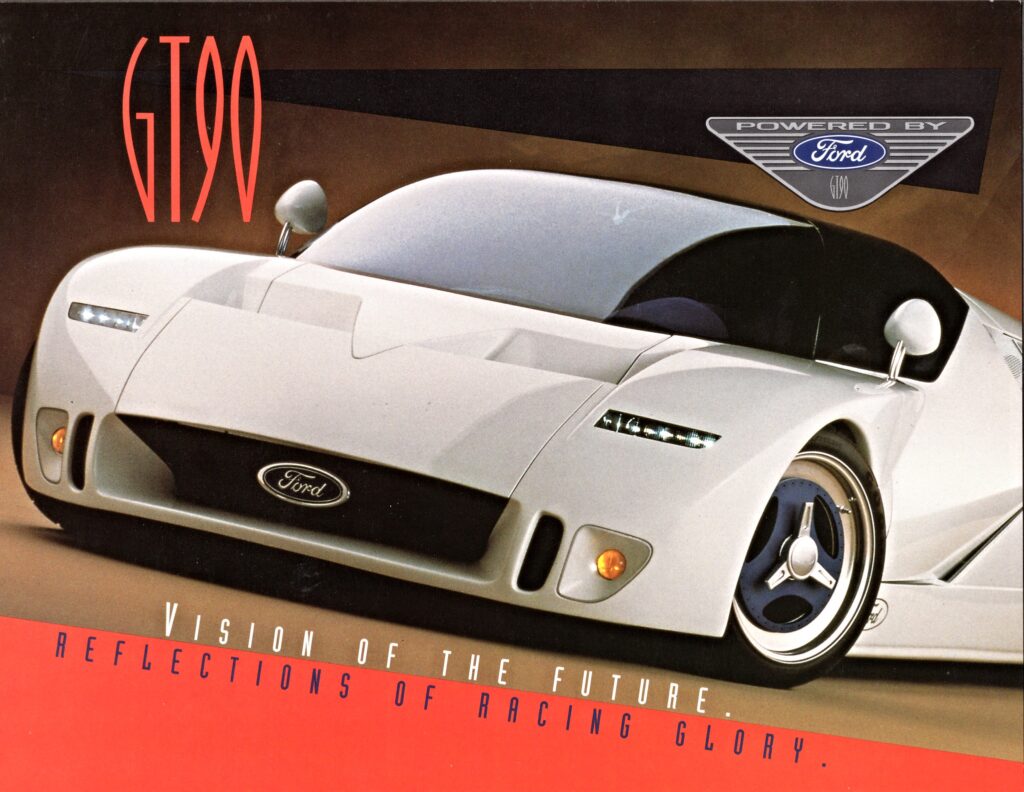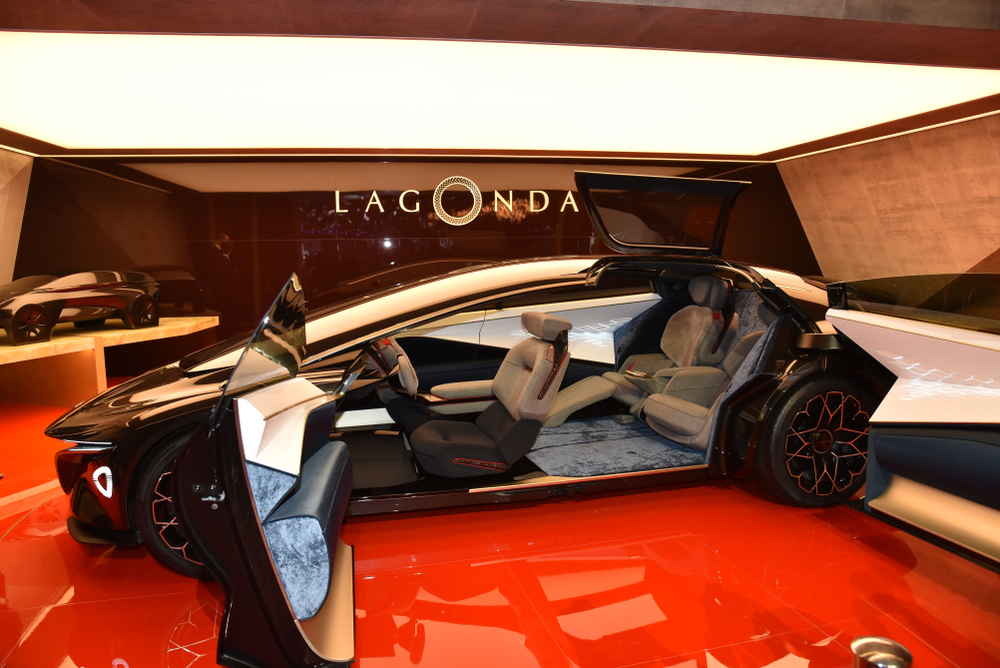Some concept cars are a glimpse into the future, sparking excitement with cutting-edge designs and innovative tech. Yet, despite the hype, not every bold idea makes it to the production line. From ambitious prototypes with dazzling features to sleek designs that seemed ready for the road, many futuristic cars have fallen short when it came time to hit the market. Let’s take a look at some of the most memorable concepts that never made it past the drawing board.
Contents
Mazda Furai

Mazda’s Furai concept, unveiled in 2008, was an audacious step into the future of design and performance. Sporting a sleek body and rotary engine, the Furai blended Mazda’s racing legacy with eco-conscious ambitions. Unfortunately, during testing, a catastrophic fire consumed the only prototype. This tragic incident, coupled with production costs, led Mazda to abandon the idea. Fans were left wondering what could have been.
Ford GT90

Ford’s GT90 was an audacious attempt to create the ultimate supercar, featuring a quad-turbo V12 engine for top-tier performance. Launched in 1995, the GT90 embodied speed and cutting-edge engineering. Although it generated significant interest, Ford eventually decided against production, citing excessive costs. The GT90 became a symbol of ambition tempered by reality, leaving enthusiasts to dream of its potential.
Jaguar C-X75

Jaguar introduced the C-X75 in 2010 as a groundbreaking hybrid concept, blending turbocharged and electric power for unmatched acceleration. With a 0-60 time under three seconds, it aimed to redefine performance. However, financial constraints and high production costs led Jaguar to drop the project. The C-X75 remains a striking example of innovation halted by practicality.
Lamborghini Asterion

Lamborghini’s Asterion concept in 2014 marked the brand’s exploration into hybrid technology, blending supercar power with eco-friendly features. Its aggressive design drew interest, showcasing Lamborghini’s potential in a new market. Yet, the brand opted to stick to traditional gas-powered vehicles, as consumer demand for hybrids was minimal. Thus, the Asterion stayed a vision of what might have been.
Nissan IDx

Nissan’s IDx, introduced in 2013, drew inspiration from the classic Datsun 510, blending retro charm with modern touches. The car’s customizable features and affordable appeal made it seem production-ready. However, a shift in Nissan’s priorities toward SUVs and electric vehicles left the IDx out. It remains a fan-favorite concept that never saw the light of day.
Mercedes-Benz F 015 Luxury in Motion

Mercedes envisioned the F 015 as an autonomous, luxurious future for urban travel. Launched in 2015, it featured a spacious, high-tech interior and cutting-edge self-driving capabilities. Despite its futuristic appeal, fully autonomous technology wasn’t ready, and regulatory obstacles were mounting. Mercedes chose to focus on other projects, leaving the F 015 a glimpse into a driverless world yet to come.
BMW Vision Next 100

BMW celebrated its centennial with the Vision Next 100, showcasing a bold concept for AI-driven and adaptive vehicles. Revealed in 2016, the car boasted an exterior that could reshape itself according to driving conditions. Nevertheless, the cost of implementing such technology proved prohibitive. The Vision Next 100 remains an aspirational milestone in BMW’s history.
Cadillac Sixteen

The Cadillac Sixteen, introduced in 2003, was a luxurious concept with a V16 engine designed to deliver unmatched power and style. While it aimed to redefine American luxury, Cadillac ultimately shifted its focus due to high costs. The Sixteen’s grandeur left an impression, but it stayed in the realm of ideas. Enthusiasts remember it as a bold experiment in opulence that never came to pass.
Chrysler ME Four-Twelve

Chrysler’s ME Four-Twelve from 2004 was designed to rival the fastest supercars, featuring a quad-turbo V12 with blistering speed potential. While it drew substantial attention, Chrysler deemed it financially unsustainable and halted the project. The ME Four-Twelve remains a striking “what if” moment in supercar history. Its brief time in the spotlight left a lasting legacy.
Honda EV-STER

Honda’s EV-STER debuted in 2011, offering a sporty yet environmentally friendly electric roadster concept. Compact and stylish, it highlighted Honda’s vision of a sustainable sports car. However, the high costs of electric technology led Honda to reconsider its feasibility. The EV-STER is remembered as a missed opportunity in electric innovation.
Volkswagen W12 Nardo

Volkswagen’s W12 Nardo, introduced in 2001, showcased a powerful W12 engine aimed at supercar performance. Although it set track records, Volkswagen didn’t feel the market would support such a vehicle. Instead, the brand chose to focus on more accessible models. The W12 Nardo stands as an example of VW’s high-performance capability left unfulfilled.
Subaru B9 Scrambler

Subaru’s B9 Scrambler combined elements of motorcycles and cars in an effort to redefine adventurous driving. This unusual design intrigued fans, but production proved challenging. Limited interest and high production costs led Subaru to abandon the project. The B9 Scrambler is remembered as an innovative idea that simply didn’t align with market demand.
Peugeot Onyx

The Peugeot Onyx, revealed in 2012, combined unique materials like copper and carbon fiber with a hybrid powertrain. Although its design pushed boundaries, Peugeot didn’t see a feasible production route. High production costs kept it from becoming reality. Today, the Onyx represents Peugeot’s bold experimentation in design and materials.
Lincoln Continental Concept (2002)

Lincoln’s 2002 Continental Concept aimed to revive its luxurious past with a modern, minimalistic approach. Despite initial interest, Ford’s restructuring led to the project’s cancellation. This Continental could have made a splash in luxury markets. Instead, it remains a missed opportunity in Lincoln’s history.
Buick Avista

Buick’s 2016 Avista concept brought a sporty, coupe design that seemed ready for production, aiming to rejuvenate the brand’s image. Yet, Buick decided against it due to shifting market demands for SUVs. The Avista became a symbol of what could have added flair to Buick’s lineup. Fans still appreciate its daring design.
Renault Trezor

Renault’s Trezor, introduced in 2016, dazzled with its futuristic, electric concept and advanced AI-driven systems. While its aesthetics captivated onlookers, Renault chose not to proceed with production, focusing on more conventional models. The Trezor stands as a testament to Renault’s ambition, though the future it envisioned has yet to materialize.
Aston Martin Lagonda Vision Concept

The Lagonda Vision Concept, revealed by Aston Martin in 2018, aimed to redefine luxury with an all-electric, autonomous future. Packed with innovation, the concept faced steep development costs that led Aston Martin to put it on hold. The Lagonda Vision is a reminder of Aston Martin’s ambition in electric luxury, though it never came to fruition.
Infiniti Q Inspiration

Infiniti introduced the Q Inspiration in 2018, designed to showcase future styling with an innovative variable-compression engine. Though it embodied Infiniti’s vision for an evolving market, shifting strategies prevented its production. The Q Inspiration stands as a striking yet unrealized idea in Infiniti’s portfolio. Its ambitious features left fans intrigued.
This article originally appeared in MyCarMakesNoise.
More from MyCarMakesNoise
20 Ultra-Rare Ferraris You’ve Likely Never Heard Of

Ferrari is known for crafting some of the world’s most iconic and coveted cars, but among their impressive lineup, a few models stand out due to their extreme rarity. These rare Ferraris are not just cars; they are legends in automotive history. Read More.
25 Budget-Friendly Classics That Bring Vintage Style

Finding the perfect classic motorcycle doesn’t have to be a costly affair. With a bit of research and a keen eye, you can uncover gems that offer timeless style and reliable performance without breaking the bank. Read More.
13 Luxury Cars That Didn’t Live Up to the Hype

When it comes to luxury cars, expectations are always high. Buyers anticipate top-notch performance, cutting-edge technology, and impeccable design. However, not all luxury vehicles live up to these lofty standards. Read More.














